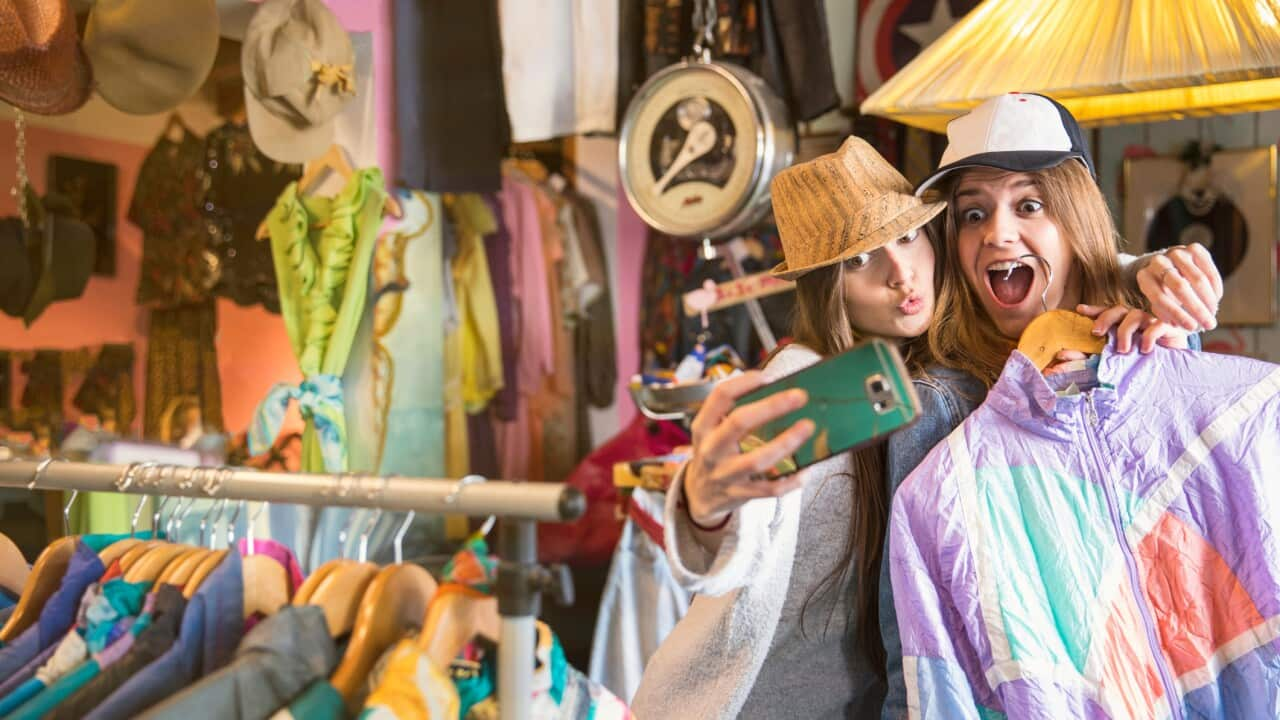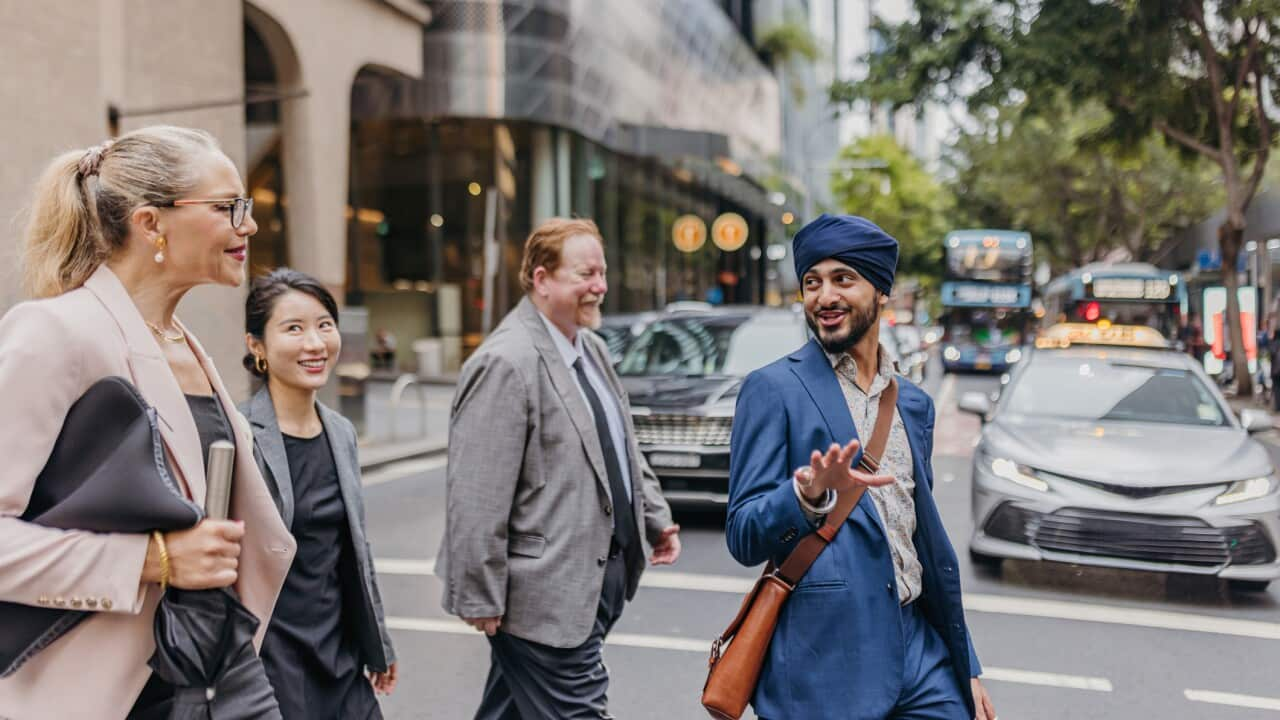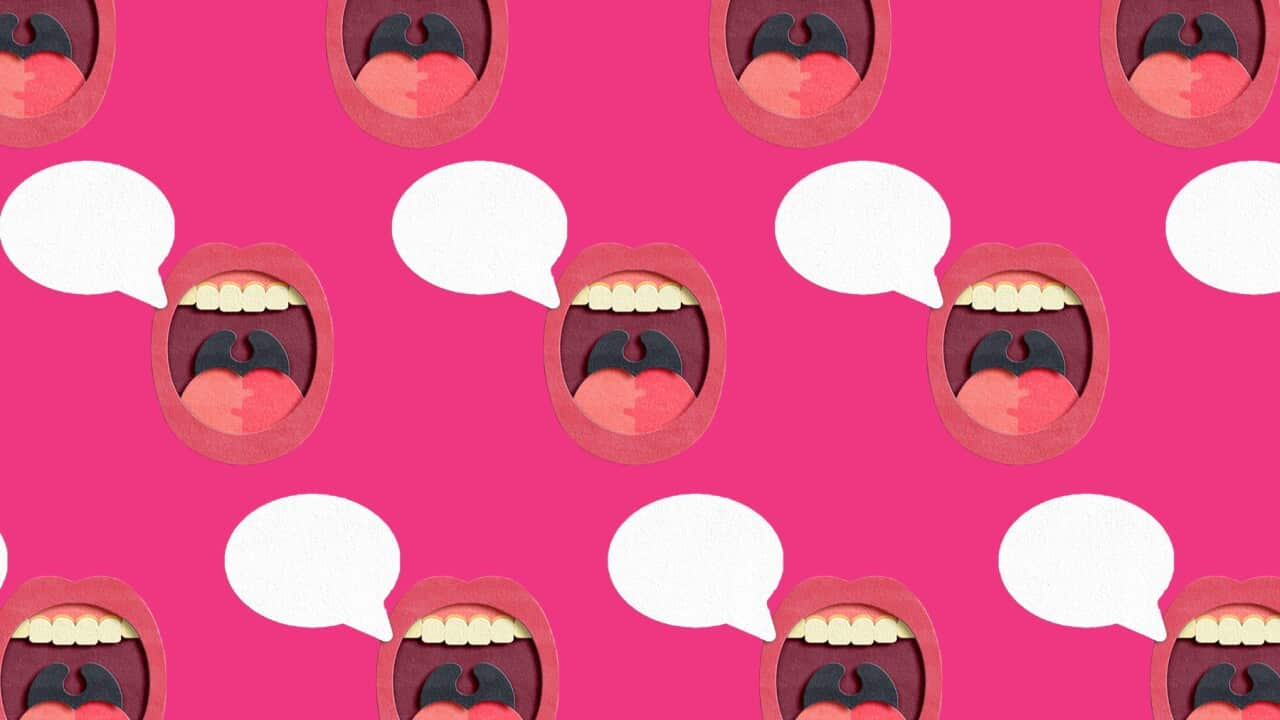This lesson suits intermediate learners. After listening, test your knowledge with our quiz.
Learning notes
Language objective
Talking about thrifting and sustainable fashion
Different phrases to use when going thrifting:
- Hey, how about we go thrifting today?
- Bargain hunting is one of my favourite hobbies.
- I save a lot of money by shopping around.
Different phrases to use when talking about clothes:
- The clothes they have on sale are very eclectic. I love it!
- I need a new outfit for a fancy dress party. Any tips on what to look for?
- A statement piece like a funky jacket or vintage dress can make you stand out!
- This stunning sequin blazer is a designer piece.
- You could rock that blazer/jacket/dress/etc.
Different phrases to use when talking about prices:
- It’s a steal!
- It’s a bargain!
- It’s a great deal!
- It’s a rip-off!
Different phrases to use when talking about fashion:
- Fast fashion promotes a throwaway culture.
- I prefer slow fashion because it focuses on ethical practises and reduces waste.
- You should give slow fashion a try; it’s all about choosing clothes that are made to last.
- I like circular fashion because it’s all about recycling and upcycling to give new life to old clothes.
Colloquial expressions:
Bargain hunting means spending time in shops looking for items to buy at the lowest price.
When you shop around, you visit a number of shops selling similar articles in order to compare the price.
Vocabulary:
A blazer is a type of jacket that looks like a suit jacket in design but is typically less formal and can be worn on more casual occasions. Many schools or sports team have their own blazers.
A designer piece is an expensive luxury item of clothing created by a well-known fashion designer.
An op shop is short for "opportunity shop," a type of thrift store.
Circular fashion is an approach to clothing production and use that aims to create a continuous cycle of using and reusing materials.
Eclectic means being varied, so when we talk about eclectic fashion, we talk about clothes that combines a mix of styles, patterns, textures, and colours.
Fast fashion encourages us to buy clothing that is cheap, quickly made and follows the latest trends that change very quickly.
An outfit is a set of clothes worn together, especially for a particular occasion or purpose.
Recycling is using materials again or changing them into new products to use.
A sequin is a small, shiny, disk that is sewn onto to clothing to add sparkle.
Slow fashion promotes buying clothes that are made to last, rather than ones that quickly go out of style.
A statement piece is a piece of clothing or other fashion items that catches people’s attention because it is often bold, or distinctive in design, colour, or texture.
A thrift store is a store that is sells second-hand clothes and other goods donated by people to support a charity.
Thrifting is shopping in thrift stores.
A throwaway culture is when we throw things away and replace them with new things rather than reusing or repairing them.
To rock something in a fashion context means to wear it with confidence and style.
Upcycling is reusing old things in ways that make them better or even more useful.
If something is vintage, it is old and usually unique or interesting because it is old.
Transcript:
(Note: This is not a word-for-word transcript)
SBS acknowledges the Traditional Custodians of Country and their connections and continuous care for the skies, lands and waterways throughout Australia.
My name is Josipa, and I’m very excited about this episode because we are going to talk about one of my favourite hobbies, thrifting.
Just last weekend I had a great thrifting adventure, and I can’t wait to tell you about it, but before I get into details, I need to ask you something.
Are you familiar with the term ‘thrifting’?
For years I’ve been shopping in second-hand stores, but I only learned about the term thrifting over the weekend when my friend, Claire, asked me,
Hey, how about we go thrifting today?Claire
Thrifting is shopping in thrift stores. These are second-hand stores that sell things that other people have donated to the shop because they no longer need them. They are usually very cheap.
The expression ‘thrift stores’ comes from America. In Australia and New Zealand thrift stores are also called op shops, short for "opportunity shops".
The term op shop was actually first used in the 1920s when a former Melbourne showgirl, Lady Millie Tallies decided to give such shops a more respectable name, and came up with the term ‘opportunity shops’, or ‘op shops’.
Anyway, besides Claire and me, do you know who else loves to go bargain hunting?
Allan does. He is always spending time in shops looking for things to buy at the lowest possible price. So, Allan could say,
Allan
Bargain hunting is one of my favourite hobbies.
I save a lot of money by shopping around.Allan
When you shop around, you visit a number of shops selling similar articles in order to compare the price.
Now, let’s imagine that we have just stepped inside an op shop. Oh yes, as we breathe in, we can smell a mix of aged books, vintage fabrics and mismatched furniture.
We look around. The walls are decorated with artwork, each one painted by some unknown artist.
In the corner, next to the rack filled full of clothes made of lots of different fabrics: velvet, denim, lace and silk, I can see Allan and Claire. Let’s hear what they are talking about,
Allan
The clothes they have on sale are very eclectic. I love it!
Claire
I need a new outfit for a fancy dress party. Any tips on what to look for?
Allan
Why don’t you look for some kind of statement piece, like a funky jacket or a vintage dress. Then you’ll really stand out!
Claire
Oh, look at this stunning sequin blazer. And it’s a designer piece!
Allan
It’s gorgeous. You could rock that blazer. What’s the price tag?
Claire
Can you believe it! Only $20. It’s a steal!
Let’s leave Allan and Claire as they continue to explore the op shop; we have some things to learn, right?
First Allan said,
The clothes they have on sale are very eclectic.Allan
Eclectic means being varied, so when we talk about eclectic clothing, we talk about clothes that combines a mix of styles, patterns, textures, and colours.
I love mixing styles and patterns, so you could say that I have an eclectic taste in fashion.
I need a new outfit for a fancy dress party.Claire
An outfit is a set of clothes worn together, especially for a particular occasion or purpose, in Claire’s case she is looking for an outfit for a fancy dress party.
Have you been to a fancy dress party before? A fancy dress party is an event where people dress up in costumes or outfits that are often extravagant, creative, or represent a specific theme.
We wear outfits on any occasion.
For example, when I come home after a busy day at work, I just want to relax in a casual outfit that is very comfy like sweatpants, a soft hoodie and warm socks. But when I’m heading to the beach, my casual outfit is a short summer dress and thongs.
Any tips on what to look for?Claire
If you ask someone for a tip, you are asking for a suggestion or recommendation on how to do something. Do you remember the tip Allan gave to Claire?
Why don’t you look for some kind of statement piece, like a funky jacket or a vintage dress?Allan
A statement piece is an item that stands out and catches attention. It is often unique, bold, or distinctive in design, colour, or texture.
And a funky item of clothing is bold and unusual, often brightly coloured or colours or patterned with unique details that make it stand out.
Allan also suggested that Claire might look for a vintage dress. Something that is vintage is old and therefore often unique.
And we can use it to describe other things, not just clothes. For example, in the op shop we visited over the weekend, I fell in love with a beautiful vintage tea set that looked like it could whisper secrets from another time.
Let’s continue,
Look at this stunning sequin blazer.Claire
A sequin is a small, shiny, disk sewn onto clothing to add sparkle. By the way, Claire and I almost bought a sequin saree each, but we didn’t in the end because we couldn’t think of enough occasions to wear them to.
And do you know what a blazer is?
A blazer is a type of jacket that looks like a suit jacket, a suit jacket in design, but is typically less formal and can be worn on more casual occasions. A lot of schools or sports teams have their own blazers.
It’s a designer piece.Claire
If you have a designer piece in your wardrobe, it means you own a luxury item of clothing considered to be of high quality, created by a well-known fashion designer.
Toward the end of our dialogue, Allan said to Claire,
You could rock that blazer.Allan
To ‘rock’ something in a fashion context means to wear it with confidence and style.
For example, I could say that Allan can rock a leather jacket like no one else because when he is wearing leather jackets he looks amazing and confident.
In any case, Claire ended up buying that stunning sequin blazer – she looked really good in it. and it was very affordable. So, she said,
It’s a steal.Claire
We can use the expression ‘It’s a steal’ when we are able to buy an item for a price that is so low that it feels like we are ‘stealing’ it.
We could also use other phrases when we buy things at a very low price or at a very good discount. For example, we could say.
It’s a great deal!Allan
Or we could use the phrase we heard at the beginning of this episode and say,
What a bargain!Claire
But if you come across something that costs much more than you think it should, you could say.
It’s a rip-off.Allan
Some people really try to charge too much. I say, ‘it’s a rip-off' every time someone tries to charge me $10 for an orange juice.
If you think that thrifting, or shopping for second-hand items, is just for people who are too poor to spend too much money on clothing – then you are wrong.
According to research from the University of Tasmania, 72 percent of Australians bought at least one second-hand item during the 2021-2022 financial year.
Many of us do it because we want to – we want to buy a piece of clothing that we don’t already have, but we don’t want to support fast fashion.
Fast fashion encourages us to buy clothing that is cheap, quickly made and follows the latest trends that change very quickly.
Fast fashion clothes are made by big stores that want us to buy new clothes all the time and this is not good for the environment because it means we have to throw away our old clothes which are no longer in fashion. So, we could say,
Fast fashion promotes a throwaway culture.Claire
A throwaway culture is when we throw things away and replace them with new things rather than reusing or repairing them.
When people buy new clothes and throw away their old ones all the time. It also causes a lot of textile waste. So, we could say,
Fast fashion harms the environment by using too many resources and creating too much waste.Allan
The opposite of fast fashion is slow fashion. Slow fashion promotes the buying of clothes that are made to last longer and to keep looking stylish, rather than ones that quickly go out of style.
If you, like me, prefer slow fashion, you then you take the time to choose clothes wisely and focus on quality so that your clothes look good for longer and you are making decisions that are better for the environment.
I prefer slow fashion because it focuses on ethical practices and reduces waste.Claire
A practice is ethical when it treats people and the environment with fairness, respect, and care.
Let’s say you have a friend who is a big consumer of fast fashion, and you want to persuade them to kick their fast fashion habit. You could tell them,
You should give slow fashion a try; it’s all about choosing clothes that are made to last.Allan
And have you heard the term ‘circular fashion’?
Circular fashion is about minimizing waste, reducing the use of new resources, and promoting recycling and upcycling.
Recycling is when we turn used materials into new products while upcycling is when we find creative ways to give old things a new purpose or make them better.
So circular fashion encourages people to keep their clothing in circulation for as long as possible, rather than throwing it away so that we create a fashion industry that is more sustainable and environmentally friendly.
If you like this idea, you could say,
I like circular fashion because it’s all about recycling and upcycling.Claire
Now, I know what you are thinking. Repairing clothes, unless you know how to do it yourself, can sometimes cost more than buying a new fast fashion item.
But my guest today, Wendy Dwyer, has a solution. Hi, Wendy thank you for joining us.
Wendy
It's a pleasure, Josipa.
Josipa
On the first and second Sunday each month, You volunteer at the Repair Cafe Sydney North. What is the Repair Cafe concept?
Wendy
So, it's like a meeting place of skilled volunteers and people who have broken items. And they'll come along and they get some help to get their items repaired.
Josipa
So, anyone can just show up and bring their items to be repaired?
Wendy
Each Repair Cafe is different. At our Repair Cafe, Sydney North, we have five major repair areas. The first one deals with electrical household items like toasters and blenders. The second area is for clothes and sewing repairs.
The third area has to do with jewellery, ceramics and glass. The forth area has to do with shoes and umbrellas. It's amazing how many umbrellas we fix during the raining season. And people also bring leather goods.
And the last area is a sharpening area where we help people to sharpen their garden tools and their knives. So those are the five areas.
A big thank you to our educational consultant Professor Lynda Yates, and our guest Wendy Dwyer from the .
Paul Nicholson and Lily O'Sullivan voiced the characters of Allan and Claire.









